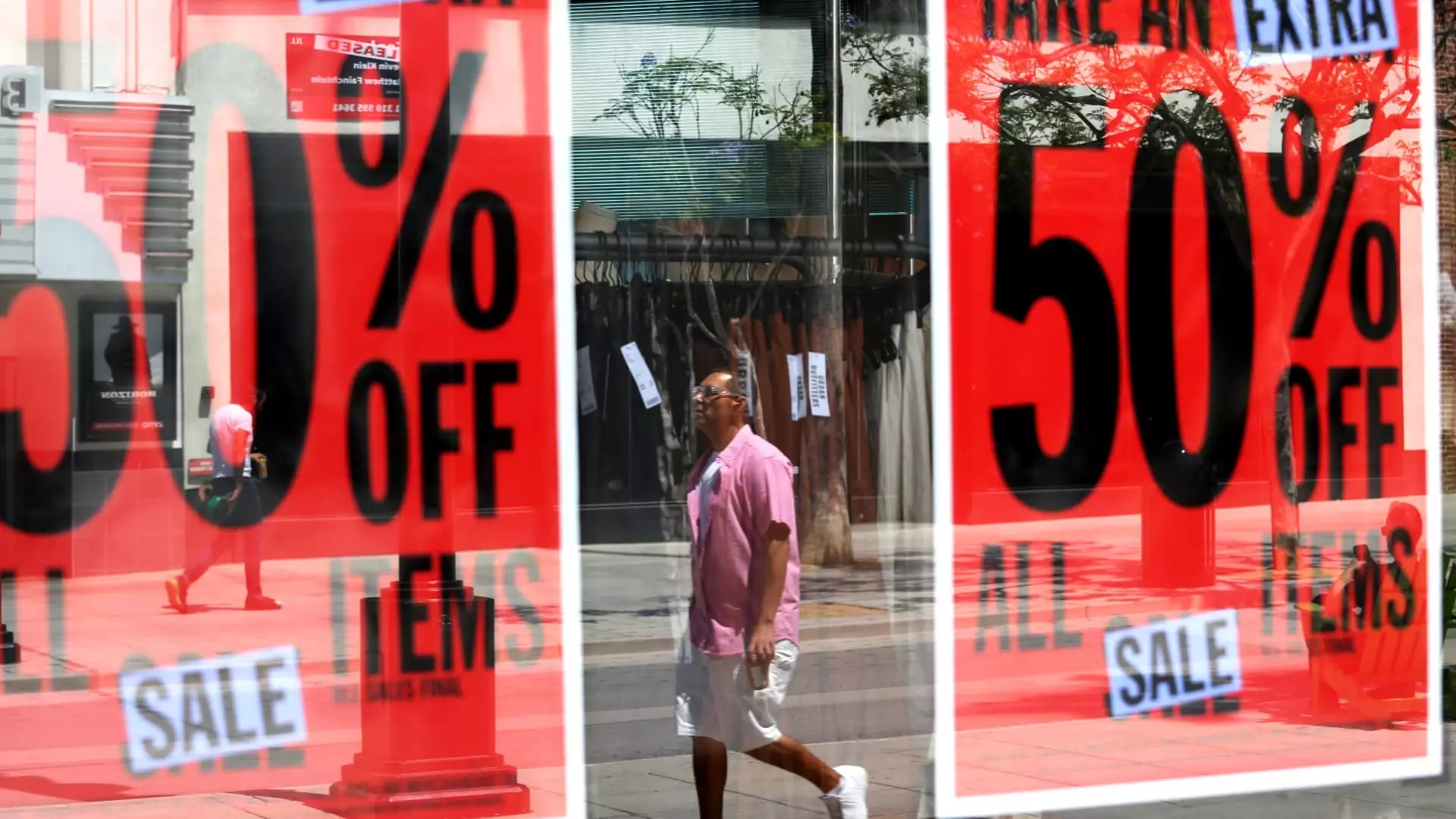As fears of declining consumer spending loom over the retail industry, many businesses are grasping for innovative strategies to safeguard their profits amidst tumultuous economic conditions. The complex landscape generated by President Donald Trump’s trade policies, particularly his tariffs on imports, has transformed retailers’ marketing approaches. Indeed, what may seem like merely a tactical maneuver is actually a desperate fight for survival, as businesses realize they must respond innovatively to both consumer behavior and governmental disruptions.
No longer can retailers simply rely on traditional marketing approaches; the stakes have soared, and agility has become paramount. Swirling uncertainties regarding price increases, lowered demand, and strained supply chains compel retailers to think outside the box, leading to marketing tactics that intentionally play on the fears and expectations of consumers.
Selling Against Tariff Threats
Several brands have faced the situation head-on by urging consumers to purchase goods before potential price hikes take effect due to tariffs. Companies like Bare Necessities capitalized on this narrative by launching “pre-tariff sales” offering hefty discounts, a tactic that simplifies customer choice down to a “buy now or pay more later” decision. “Save up to 30% before prices shift,” their marketing campaigns proclaim, targeting consumers’ fear of missing out at a harmonizing moment of rational urgency.
However, it is important to underscore that this strategy highlights an aggressive marketing approach hiding a deeper issue: retailers know that consumers may simply delay their purchases in anticipation of lower prices in the future. Reflecting a state of overwhelming uncertainty, retailers like Bare Necessities and others are converting anxiety into action. Their success will depend significantly on how quickly consumers react, balancing present savings against possible future costs that loom like shadows over market conditions.
Brand Loyalty Under Strain
The fierceness of the trade war, in conjunction with fluctuating tariffs, is straining the loyalty of consumers who often have the luxury to choose where and when they shop. Larger retail chains, with their superior supply chain logistics, are presumably in a more advantageous position to navigate these uncertainties, a reality that intensifies the plight of smaller brands lacking similar scalability.
Experts assert that the burdens of tariffs impact smaller companies much more severely as their options for sourcing remain limited. The marketplace has thus become a field where brand allegiance is squashed under the pragmatism of financial need; instead of loyalty to a brand, consumers now weigh the advantages of purchasing from a competitor that may offer a better deal due to advantageous supply lines.
As consumers begin to make purchase decisions rooted in urgency rather than affinity, brands must adapt. An evolving mentality of instinct and fleeting opportunity could reshape all aspects of retail strategy as they become aware that continuity may no longer be their most surefire companion.
The Role of Humor in Brand Messaging
One of the more refreshing responses to this complex web of economic uncertainty is the use of humor in brand messaging. Instead of adopting a solely serious tone in their communications, brands like Beis have approached customers with a wit that disarms the heaviness of tariff dialogue. “This tariff situation is a complete dumpster fire; we’re all getting burned,” they admit while playfully acknowledging their uncertain pricing strategy.
Integrating humor allows brands to neutralize political tensions that might otherwise alienate segments of their consumer base. Aligning emotions rather than polarizing opinions creates a sense of solidarity between the consumer and the retailer. Humor creates belonging, an emotional crutch in challenging times; when customers feel an empathetic bond with a brand, they become more likely to support it—even in uncertain conditions.
Emphasizing Urgency vs. Sustaining Margins
Amid this turbulent climate, retailers grapple with a delicate balancing act: generating immediate cash flow while maintaining long-term sustainability. According to Sonia Lapinsky of AlixPartners, time is of the essence. The notion that companies may need to sacrifice margins in the present for survival looms large. Retailers must ask themselves: Is it riskier to edge forward with discounts today, or to wait and risk stagnation in the face of future turbulence?
This dilemma encapsulates the tension inherent in the contemporary retail landscape. As consumer sentiment falters amidst the evolving trade climate, even highly regarded brands face the daunting task of adapting marketing strategies not just to cope, but to thrive amidst perplexing economic challenges. A simple premise emerges—storeowners must prioritize solidifying their cash flow above all, with creative urgency becoming a key element in navigating these turbulent times.
The retail landscape in the face of a trade war is far more complex than it appears at first glance. Retailers must reimagine their strategies, navigating humor, urgency, and rolled-back pricing while grappling the stark realities posed by political decisions that remain largely out of their control.

